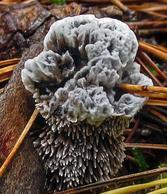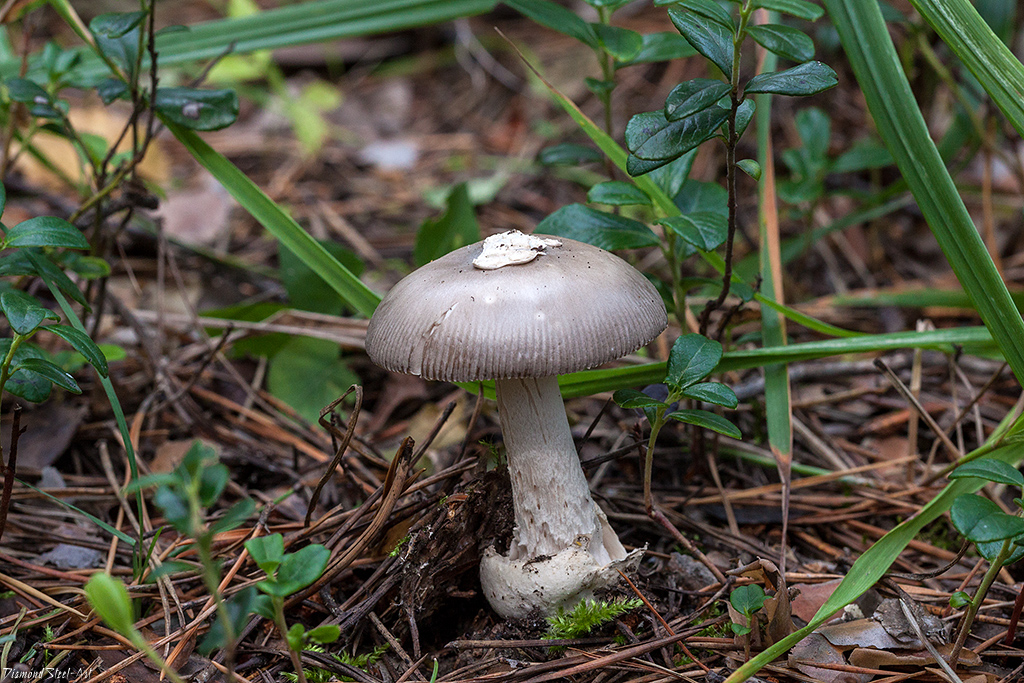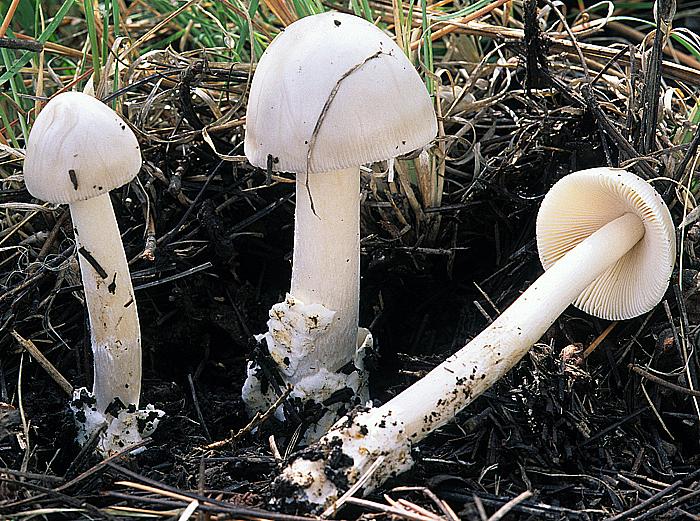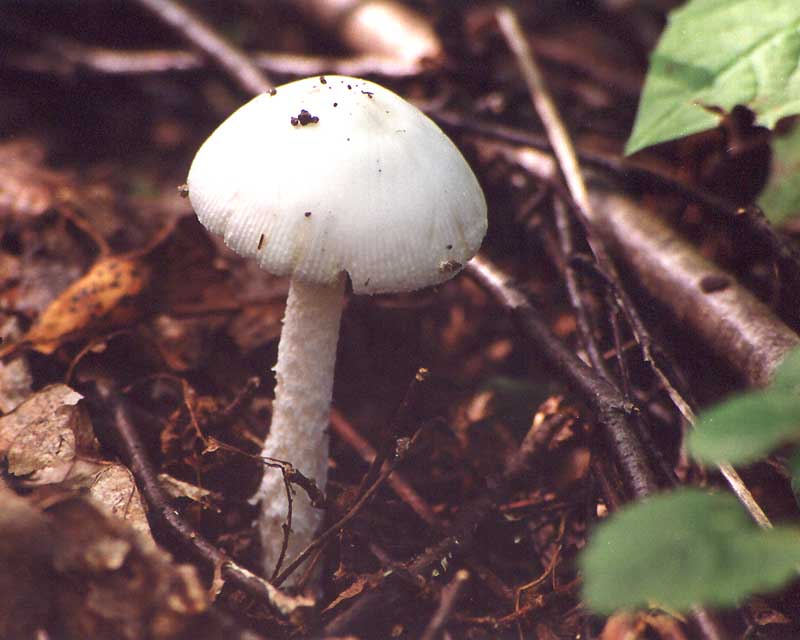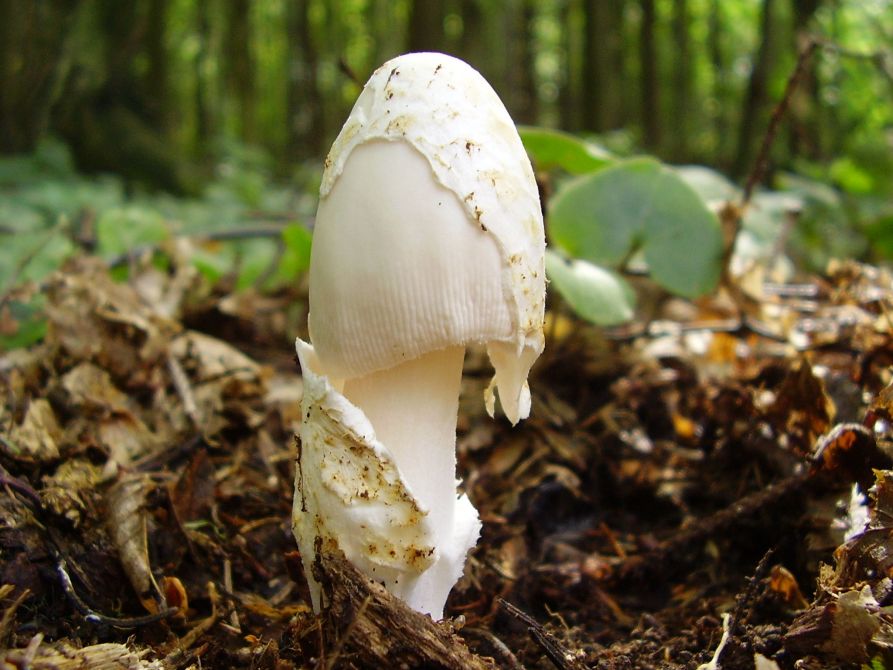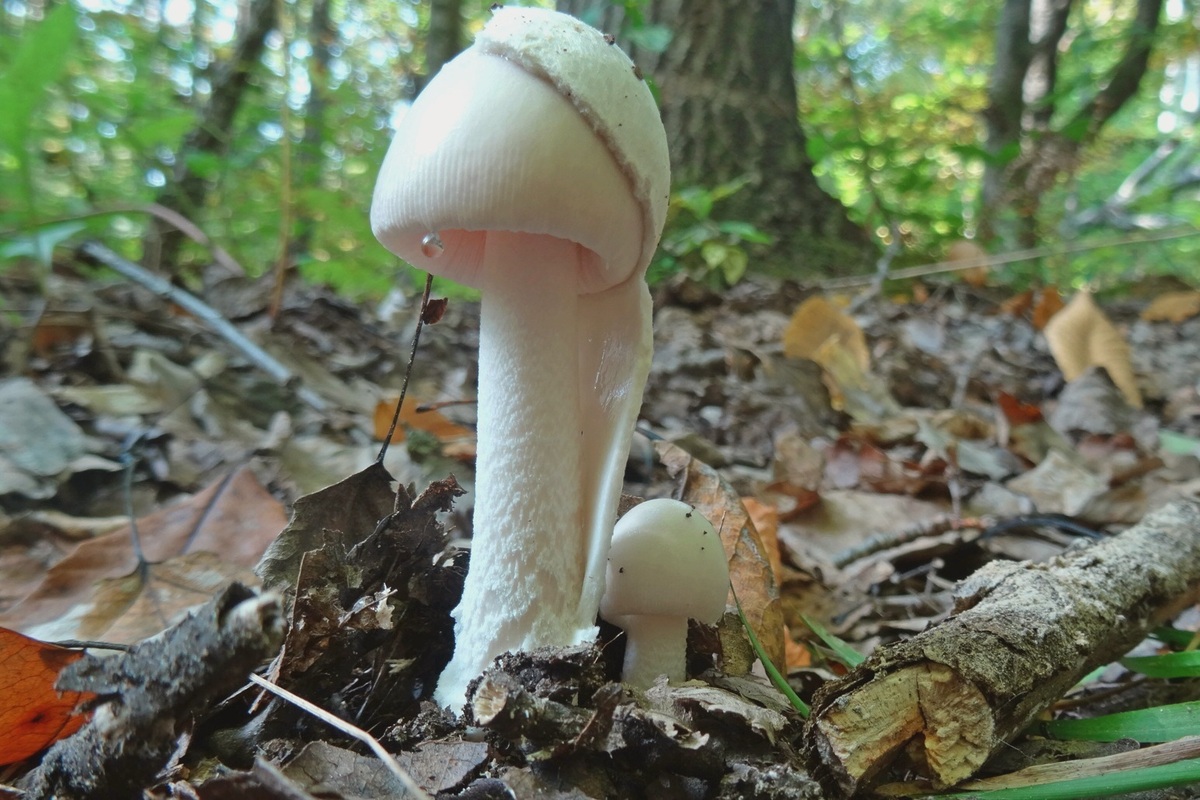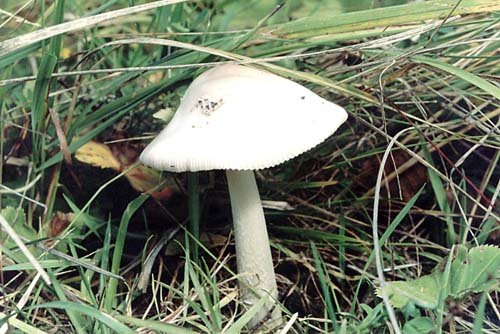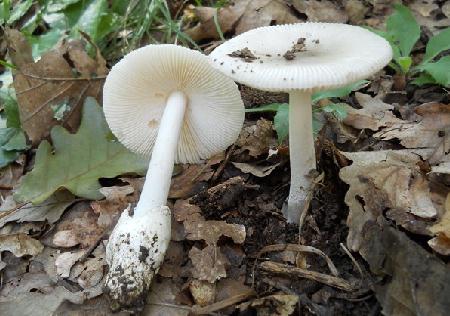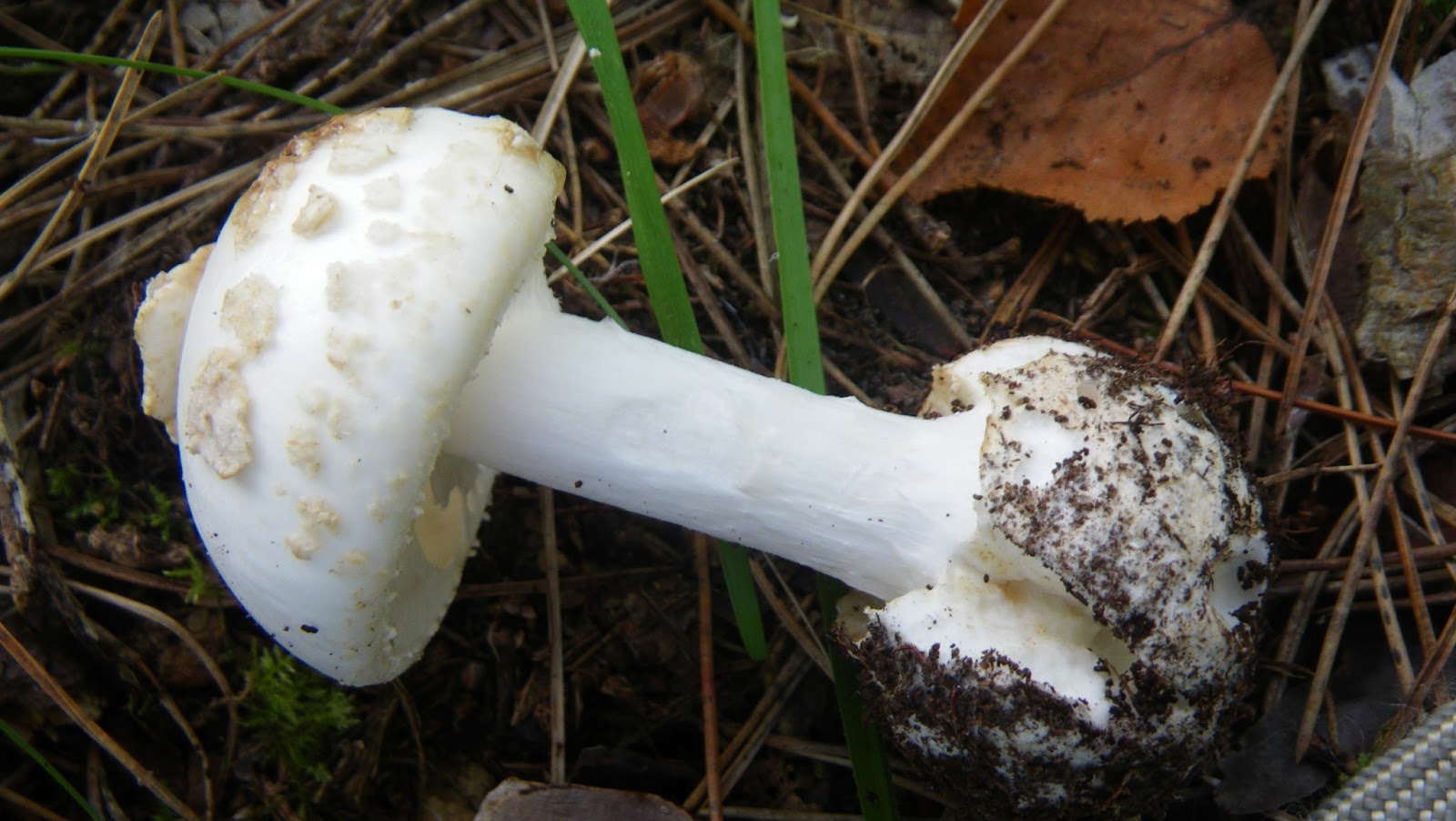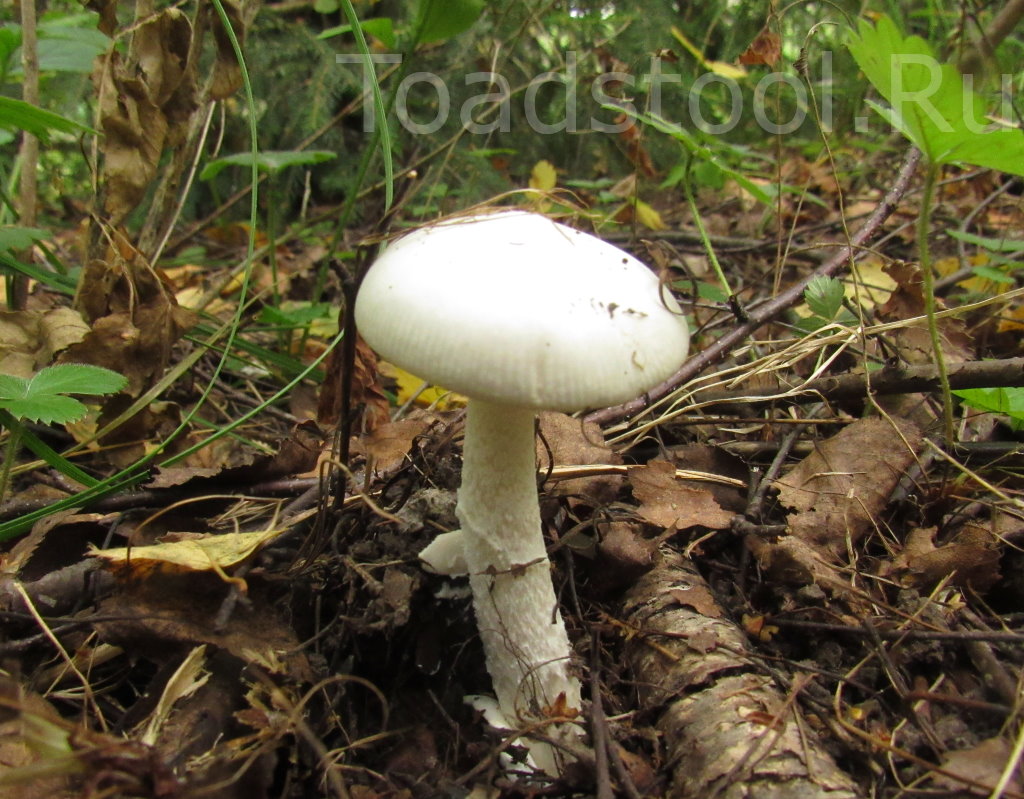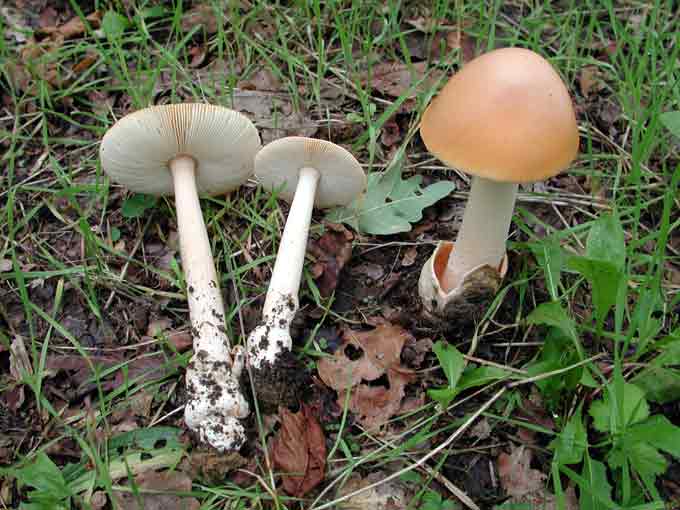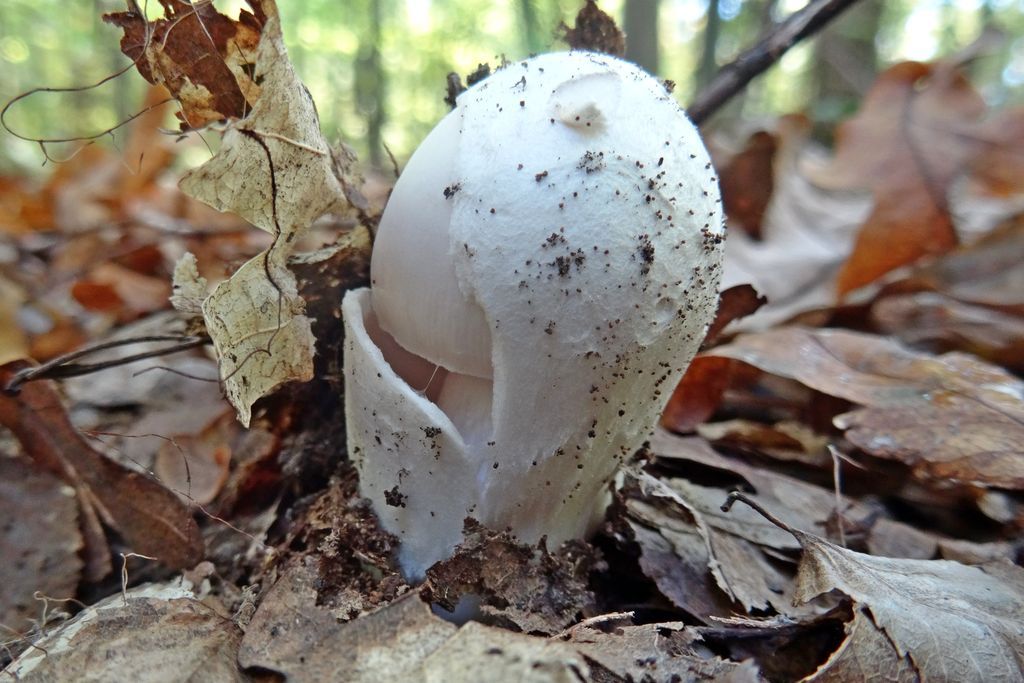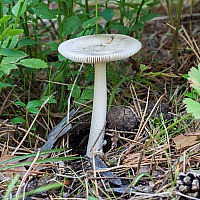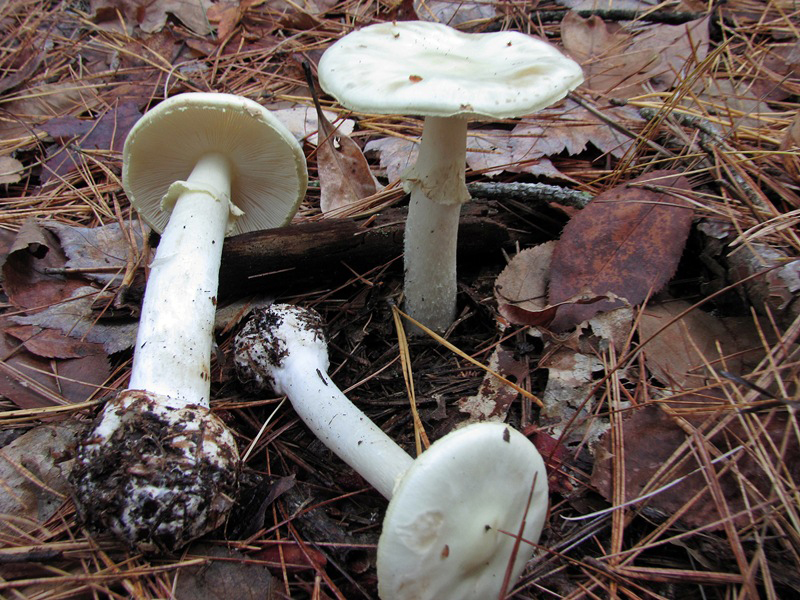Pusher mushrooms: where to look and how to cook

Pusher mushrooms, in the common people white floats, are theoretically edible, but do not represent any special nutritional value. A closely related species of the white pusher is the orange float mushroom, the description of the varieties is very close.
Description of the mushroom
The diameter of the stem of an adult white pusher, Amanitopsis alba, is 8–20 mm with a length of 5–15 cm. The stem is white or off-white and is hollow on the inside.
The saffron float (Amanita crocea) differs from the gray float (Amanita vaginata) by the coloration of the cap surface.
This conditionally edible mushroom has good taste and quality characteristics and is close in the main indicators of nutritional value to the dark brown float (Amanitaumbrinolutea). It has a rather pronounced mushroom aroma.
The hat has distinct scars on the edges. The surface of the fruiting body can have various colors, including gray, yellow-gray, gray-brown, orange shades. The diameter of the cap of an adult specimen of pusher does not exceed 4-9 cm. Young mushrooms have a bell-shaped cap, while adults can have a flat-convex or completely flat cap.
The plates are white, fairly wide and often spaced, of a free type. Spore powder is white. The spores are relatively even, rounded, quite often spherical, with a smooth surface. No staining. Disputes are always non-amyloid.
The species well known to most mushroom pickers are conditionally edible, have relatively good taste characteristics, but are collected extremely rarely, due to the presence of a very fragile cap, which makes mushrooms unsuitable for transportation or processing. In addition, many mushroom pickers are repelled by the dangerous similarity of pushers with poisonous fly agarics.
Biological features
Most often, this species is found in deciduous forests, under birches. The fungus grows best in acidic or neutral soils. Pushers contain betaine, which plays a very important role in basic metabolic processes. Besides the white pusher, var. alba, the following varieties are most common in the forest belt of our country:
- var. vaginata or gray, with an ash-gray cap on a whitish stalk with a white volva;
- var. plumbea or pusher lead-gray, with a very characteristic lead-gray cap and a bluish tint of the stem;
- var. olivaceoviridis or olive green pusher;
- submembranacea or membranous float.
Inexperienced mushroom pickers often confuse edible pushers with poisonous representatives of the genus Amanita. A distinctive feature of edible mushrooms is the loose saccular volva and the well-defined ribbed edges of the cap. The peak fruiting of Amanitopsis occurs in the first ten days of July and lasts most often until the last days of September.
Cooking applications
A small conditionally edible pusher mushroom, according to most mushroom pickers, has a very mediocre taste. Used in cooking after a short boil, well suited for drying. Amanitopsis is used to prepare first and second courses, as well as a variety of snacks.
The process of cooking pushers does not differ from the use of other types of mushrooms in cooking. They should be very carefully cleaned of dirt and rinsed thoroughly. It is recommended to boil pushers for 40-50 minutes. You can salt and pickle Amanitopsis without first soaking or scalding.
Most often, homemade mushroom soups are prepared using pushers. Boiled mushrooms should be rinsed and filled with water again, add chopped potatoes, carrots and seasonings.
The dish is recommended to be served with sour cream and chopped herbs. Potatoes baked with Amanitopsis alba mushrooms and cheese taste good.
Before baking, pushers must be boiled.
How to make mushroom soup (video)
Pushers are very fragile and delicate mushrooms that require especially careful treatment. When collecting them, you should be very careful: in recent years, very often among the causes of severe poisoning is the use of false pushers, which include about ten related varieties of mushrooms from the Mukhomorov family.
(2 5,00 out of 5) Loading ...
Gray float (amanita vaginalis, Amanitavaginata) how it looks, where and how it grows, edible or
Gray float (amanita vaginal): photo and description
The gray float is a mushroom that belongs to the Amanite family. The fruiting body also has a second name: Amanita muscaria.
How does the float look gray
Outwardly, the fruit body looks inconspicuous: it looks like a pale toadstool. Many mushroom pickers bypass it, considering it toxic.
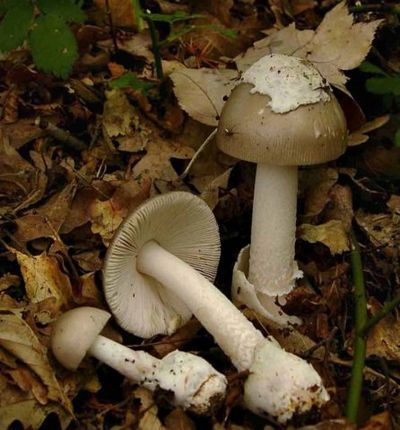
Description of the hat
In diameter, it can reach 5-10 cm, has a color of different gray colors: from light to dark. There are representatives whose color is brown or yellow. The shape of the cap differs as it grows: in young specimens it is ovate-annular, after which it gradually becomes flat-convex with ribbed edges. There may be flocculent residues from the entire bedspread. Its pulp is white and fragile, so it breaks easily.
The plates on the other side of the cap are permanent and wide. In young specimens, they are white, but gradually become yellow in color.
Leg description
Amanita vaginalis has a long leg: it can reach 12 cm in height and 1.5 cm in width. It is cylindrical in shape, hollow in the middle, with an expanded base. When viewed on it, you can find flocculent plaque and spotting, whose shade is lighter than that of the cap.
The vulva is of a decent size, yellow-red in color. A distinctive feature is the absence of a ring.
Where and how it grows
You can collect the gray float everywhere: it grows successfully in coniferous or deciduous forests, and is found in mixed plantings. The fruiting period is from July to September.
Eat a mushroom or not
The float belongs to the conditionally edible fruit bodies. An unsightly appearance and similarity with toxic representatives are a common basis on which mushroom pickers avoid this species.
Before you use it, you need to boil it.
It must be borne in mind that the pulp is very fragile, easily breaking, which complicates the culinary processing of the mushroom
toxic twins and their differences
There is a chance to confuse amanita vaginalis with pale toadstool. The latter has a brown-olive-colored hat with a silky sheen or whitish flakes on the surface. As the fungus grows, it changes its color to grayish. Important differences between the species are the absence of a ring on the leg and the presence of a free saccular vulva in the twin.
It is necessary to distinguish the gray float from the stinking fly agaric. The latter is distinguished by a wide-conical hat, reaching a diameter of 12 cm. It is sticky to the touch, shiny, white in color. The pulp at the fruiting body has a fetid odor. The double is very poisonous, it is not allowed to use it in food.
Conclusion
The gray float is a representative of edible fruit chalk. Regardless of its ugly appearance, it is suitable for cooking. The species is widespread everywhere, the harvest is harvested from July to September. The specimens should be carefully examined: the gray float is easily confused with the pale toadstool and the stinking fly agaric.
Float white, Amanita alba
Hat: Diameter 5-10 cm, in youth ovoid, with age it opens to almost prostrate, although in the center, as a rule, a characteristic tubercle remains. On the white surface of the cap one can sometimes notice large remnants of a private bedspread; the edges of the cap, like all floats, are ribbed, with protruding plates.The flesh of the cap is white, without any special taste or smell, thin and brittle.
Hymenophore: The plates are white, free, frequent.
Spore powder: White.
Leg: Height 7-10 cm, thickness up to 2 cm, white, covered with white scales, hollow, expanding towards the base. The ring is missing, the volva is white, free, usually submerged in the ground.
Spreading: A white float grows from mid-summer to mid or late September in deciduous and mixed forests, forming mycorrhiza with birch; not common.
Similar species: It's no secret that the genus Amanita contains many venomous species, many of which can be mistaken for a white float with a nonzero probability. Among them are the white form of the pale toadstool (Amanita phalloides) and the stinking fly agaric (Amanita virosa). In principle, the absence of a ring and the thin ribbed edges of the cap make it possible to virtually unmistakably distinguish the white float from these dangerous mushrooms, but maximum care is required here.
What is a little more complicated, in amateur practice, confusion can arise between the white fly agaric, which has now been resettled from the fly agaric into a separate genus and is called Aspidella thiersii, and the white float, which is now considered the form of an ordinary gray float (Amanita vaignata var.alba). How to deal with this, I cannot say yet. It is a fact that in our taxonomy the white float and the white form of the gray float mean the same mushroom. And what is “imported” Amanita alba, and whether this new Aspidella thiersii (nee fly agaric, Amanita ovoidea) grows in our country - this has yet to be specifically dealt with.
You should also pay attention to the snow-white float, Amanita nivalis. The Russian name should not lead a naturalist into delight: in fact, our former Amanita alba is whiter than all of its relatives put together
Edibility: The mushroom is edible, but not particularly valuable. It is best to collect floats purposefully, assembled and carried them: they quickly crumble in a common basket.
Author's notes: The white float is the rarest of the well-known members of the former subgenus Amanitopsis. The rarest and most dangerous. A mushroom provocateur, a mushroom challenge: either a person boldly takes it and fries it with onions, or admits that he has read a lot in “arguments-and-facts” popular science articles about mutant mushrooms and now does not trust his eyes. Your choice.
Scientists mycologists have made their choice, and the choice is radical - the white float as a species no longer exists.
The plates are like all decent fly agarics, but, we note, not the slightest trace of a private veil. Cylindrical, evenly tapering in the upper part of the leg, slightly "unfinished" cap (as if there was not enough material on the edges - it turned out to be thin, translucent), a small volva of shallow depth - Amanita alba is a well-recognizable float, except for cases when culinary question. Then, of course, suspicious lines are immediately noted.
The “ribbed” periphery of the cap makes it quite easy to distinguish the floats, and in particular the white float, from the “fly agaric” representatives of the genus Amanita. The shaggy leg is frankly alarming, but the “ribbed” edge of the cap and the conspicuous Volvo, on the contrary, bring peace: after all, a float, not some dangerous white fly agaric that has lost a ring somewhere. The smell (or rather, its absence) makes the blissful picture complete. But I would not eat such a mushroom anyway. If not a hungry year.
In such a depraved-curved form, the white float painfully resembles a smelly and deadly fly agaric. No ribs on the edges of the cap, no ring, no wide free Volvo completely removes suspicions. It is better not to touch such a mushroom, anyhow it didn’t work out.
And what is it that puffs up in the upper part of the leg? It is intellectually clear that this irregularity is not even remotely related to the ring. But even such a subtle, on the verge of indistinguishability, a hint of ringing should serve as a brightest, unforgiving stop signal for connoisseurs of floats.
Appearance
The pusher (Amanitopsis alba), according to the description, has a leg 0.8-1.2 cm in diameter, 5-15 cm high. The color is white or gray. Mushrooms of the type of saffron floats (Amanita crocea) differ from gray floats (Amanita vaginata) in the color of the cap.
The surface of the cap in different types of mushroom float has a variety of colors: gray, yellow, orange. The hat of an adult individual reaches 4-9 cm in diameter. In the young it is bell-shaped, in adults it is already flat, and occasionally flat-convex.
The hymenophore plates of the floats are white, free and frequent. The spore powder is also white. Spores in the form of a ball, non-amyloid, their surface is smooth.
Irina Selyutina (Biologist):
Scars are clearly visible along the edges of the cap - traces of attachment of plates and plates from its lower side. On the surface of the cap, there may be flakes that are easily separated from the skin - filmy or similar in appearance to warts.
The leg of the floats (pushers) can be either naked or covered with a flaky bloom, or have a pattern of thin (to match its surface) scales. Despite the fact that the mushrooms belong to the fly agaric, at the base, the leg does not have a tuberous swelling and is separated from the cap quite easily.
The lower part of the leg is immersed in a well-developed volva, which, in turn, is located quite deep in the soil. But with age, the Volvo can sometimes disappear. There is usually no ring on the leg.
The float mushroom is similar to the fly agaric even in chemical composition, but some scientists refuse to consider them related species.

The height of the mushroom leg is 5-15 cm, the diameter of the cap is 4-9 cm
The gray float mushroom is an edible species. It is noticeable due to the gray color of the fragile cap 4-8 cm in diameter. Its central part is a darker, more saturated shade. It has an ovate-bell-shaped shape, sometimes flat. The edge is ribbed along the entire circumference. Leg 5-12 cm high. Colors - white, beige, gray. The plates are white and loose. These mushrooms grow in late summer and early autumn, singly or in large quantities at a short distance.
There is a possibility of meeting the following types:
- The float (pusher) is yellow-brown: it has an unusual cap color. Its edges are white, changing towards the center from brown, orange shades to dark, almost black in the central part.
- The float (pusher) is saffron: it is distinguished by a saffron and orange hat, which has a dark color in the central part. The leg also has this shade. The plates are often yellow. They grow rarely, primarily in swampy areas (one by one and in groups).
- The float (pusher) is umber yellow (Battarra's fly agaric): in the central part of the cap they are dark in color, while the edges are yellow or brown. The leg also has this shade. There are small scales on it.
- The float (pusher) is white: representatives of this species have a leg with pale scales, on which there is an ovoid or flat cap with a small tubercle in the central part. Its size reaches 10 cm in diameter. The pulp is white, but fragile and crumbles quickly. This species grows in mixed and deciduous forests, near birches.
- The float (pusher) is snow-white: perhaps the smallest species. Its leg is 7-10 cm high, and the cap is 3-7 cm in diameter. Young individuals have flakes covering the surface of the cap. Over time, they disappear, and the shade of the leg also changes: white becomes gray.
Where can you meet
In regions with a temperate climate, pushers grow in light forests of various types (coniferous, mixed, deciduous). They can also be found on well-lit forest edges or simply in tall grass.
Did you know?
In the forests of North America, black floats grow, which are called royal for their size: the diameter of the cap is 15 cm (and this is with a leg length of 25-27 cm).
Some species grow singly, while others usually grow in groups. Float mushrooms can often be seen on peat bogs and acidic soils. Another location beloved by some species is closer to the trunks of coniferous trees or birches.
Photos of the saffron float (Amanita crocea)



Among the many lower plants, there are conditionally edible forest representatives, pushers - mushrooms (photo), which belong to the fly agaric family. They are popularly called orange or white floats. You can see pushers in birch forests, they appear in early July and continue to grow until mid-September. In Crimea, for example, such conventionally edible plants are harvested in light deciduous and coniferous forests. Occasionally, there are specimens that are located in families, but still more often the mushrooms grow alone.
Among the many lower plants, there are conditionally edible forest representatives, pushers - mushrooms
The body of the float consists of a cap and a leg. The diameter of the upper part of the mushroom reaches 9-10 cm. The shape of the cap is bell-shaped or rounded-conical. When the upper part is fully expanded, it takes on a flat appearance with a small tubercle in the center. The edges of the body are thin and fragile, but the central part of the cap is rather fleshy. The top of the mushroom is smooth and shiny, after rain the body becomes slippery.
At the break, the pulp is white or creamy, the forest dweller tastes sweet, its aroma is unremarkable. The elongated leg is rather thin, its size reaches no more than 2 cm in diameter. The height of the leg is 7-15 cm. The surface of this part of the body is smooth, but sometimes it is flaky.

This mushroom is lamellar, the plates are frequent, with a convex shape. In young specimens, they are white, with age they acquire a yellowish tint. Film remains (volva) - lobed, wide, more often located at the base of the pusher.
The description would not be complete without mentioning that the pushers can be very different in color. In the forests, it is not uncommon to find not only a white, but also a gray float mushroom. They are brown and greenish, purple and brownish-yellow.

When collecting pushers, care must be taken, these conditionally edible mushrooms have many similarities with poisonous fly agaric. Toadstool and stinky fly agaric strongly resemble white float
It is because of this that mushroom pickers dislike pushers. The main differences between the edible body include the presence of the remnants of a blanket on the top of the cap, which protected the plant during the growing up period. The color of the pulp at the fracture site does not change. Well pronounced, i.e. having visible scars, the edges of the cap are another sign of the edibility of a forest dweller.
Mushroom float - edible

The float is white, belongs to the fly agaric family. Mushroom pickers dislike him for his appearance. It resembles smelly fly agaric, or pale toadstool.
You can distinguish it, but you need to be extremely careful. The first sign of a white float is that it is indeed white. The cap may be slightly darker than the spore-bearing plates. In diameter, it reaches fifteen centimeters; in its center, the remnants of the blanket that protects the mushroom during growth are clearly visible.
The edge is uneven, ribbed. This mushroom has no particular smell. On the cut, the flesh does not change color.
You can meet this mushroom in deciduous forests. The difference between this mushroom is the ribbed edges of the cap, a pouch at the base and the absence of a ring on a thin high leg. You can pick these mushrooms only from July to the end of September.
These mushrooms can be used in cold appetizers, as well as stewed and fried, but they must first be boiled.
The float is white. White pusher (Amanitopsis alba)
The float is white. White pusher (Amanitopsis alba) photo
Occurs in autumn in birch and coniferous forests with an admixture of birch, very rarely and abundantly. The whole mushroom is snow-white. The rest is the same as the gray float. Edible, fourth category, tastes good.
It is used boiled. The white pusher can be confused with the deadly stinking fly agaric (see comparison table).
Float yellow-brown (Amanita fulva)
Float yellow-brown (Amanita fulva) photo
Grows in birch forests, on the outskirts of bogs from July to September. The hat is yellow-brown.The rest is the same as the gray float.
Floats differ from fly agarics by the absence of a ring on the leg. Edible mushroom, belongs to the fourth category. Used boiled.
The float is gray. Gray pusher (Amanita vaginata)
The float is gray. Gray pusher (Amanita vaginata) photo
Usually grows in single specimens in a variety of forests and shrubs from July to late August.
The cap is up to 10 cm in diameter, gray, bell-shaped in young mushrooms, almost flat in mature ones, with a tubercle in the center and with a ribbed (ribbed) edge. The skin of the cap is dry, in young ones with white flakes, later disappearing.
The flesh of the mushroom is thin, white. Spore powder is white.
The leg is up to 15 cm long, 1-2 cm thick, white, fluffy-scaly or smooth, widened at the base and placed in a wide, saccular volva (white, gray or brownish), which is deeply buried in the ground. There is no ring on the leg. The float is gray edible, fourth category.
It is used boiled.
Saffron float (Amanita crocea)
Saffron float (Amanita crocea) photo
Occurs in deciduous and mixed forests from July to October. The cap is up to 7 cm in diameter, orange-ocher. The edge is ribbed-striped. The plates are white.
Spore powder is white. Leg up to 12 cm long, 0.5-1 cm thick, white, fibrous-scaly, with ocher-sinuous belts. Volvo white, free. The saffron float is edible, the fourth category.
It is used boiled.
Saffron float
- How do they look mushroom floats? Where and when do they grow? Photo floats... And a lot more useful information about these mushrooms.
- Mushroom float... All kinds floats with photos and descriptions of their differences. ... Headings: P, Conventionaledible mushrooms. Float white (Amanita alba) Hat: ...
- May 29, 2010 …Float white - this mushroom from the fly agaric family, mushroom pickers of all stripes, frankly, do not like it. They do not like him for his provocative ...
- Amanita and edible float... There are several types of fly agarics. ediblebut they are of poor quality. Such are, for example, fly agaric ...
- Float Gray. Gray pusher (Amanita vaginata). Photo, description, growth, category and use, where it grows. Flavoring and nutritious ...
- Float White. White pusher (Amanitopsis alba). Photo, description, growth, category and use, where it grows. Flavoring and nutritious ...
- Float gray ... Amanita vaginata) - mushroom from the genus Amanitus of the Amanitaceae family. …. Conditionallyedible mushroom good quality.
- Sometimes float confused with the pale toadstool (Amanita phalloides). But these mushrooms there are significant differences: float there is no ring on the leg, ...
Mushroom float: photo and description

The float mushroom has an exquisite appearance and high nutritional value. They are found in large numbers almost everywhere from early spring to late autumn. Look at the mushroom float in the description with the photos that are offered on this page. Various species of this mushroom are considered, advice is given on where to look for it most productively.
Float yellow-brown
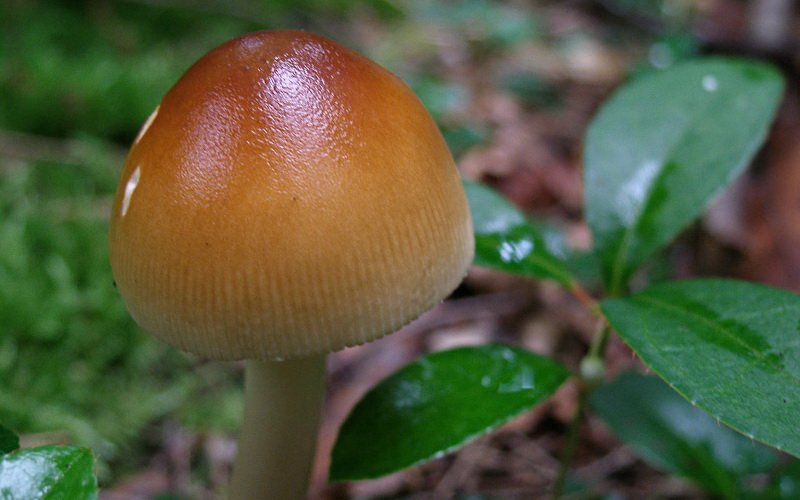
The float is yellow-brown in the photo

The float is yellow-brown in the photo
The mushroom is edible. The cap is 4-8 cm in diameter, thin and fragile, dry or slightly slimy, at first ovoid, then bell-shaped, then flat-convex or flat with a tubercle in the center, sometimes with white filmy scraps of bedspread, ribbed along the edge. The color of the cap is first brown, then orange-brown with a darker center. The plates are free white. Stem is white, smooth, hollow, brittle, 6-12 cm long, 1-2 cm thick, immersed in the lower part of a loose brownish volva. In principle, there is no ring on the leg. The pulp is fragile with a mushroom smell. Spore powder is white.
Check out this mushroom float in photos that show its unusual appearance.
Fruiting from July to October.
It can be confused with poisonous fly agarics, but those always have a ring on the leg or traces of it.
The yellow-brown float is edible after pre-boiling.
Mushroom float gray
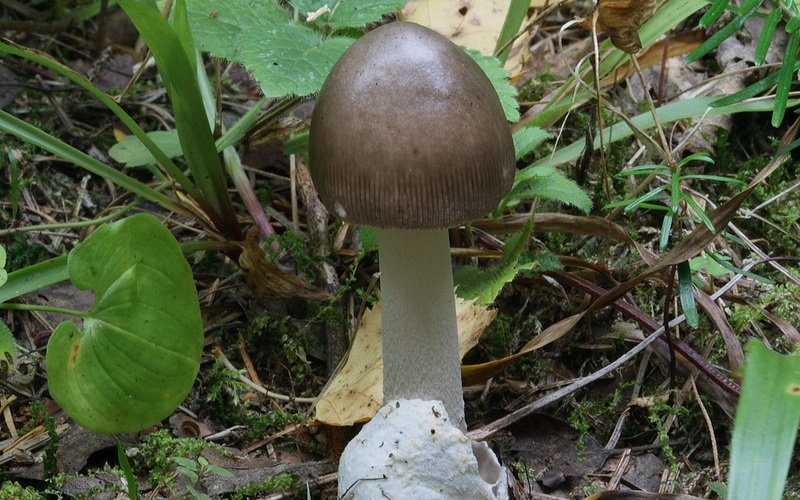
Mushroom float gray in the photo

Mushroom float gray in the photo
The mushroom float is gray edible, its cap is 4-8 cm in diameter, thin and fragile, dry or slightly slimy, at first, ovoid, then bell-shaped, then flat-convex or flat with a tubercle in the center, sometimes with white filmy scraps of bedspreads, along the edge ribbed. The color of the cap is gray or ocher with a darker center. The plates are free white. The leg is white, beige or grayish, smooth, hollow, brittle, 6-12 cm long, 1-2 cm thick, immersed in the lower part of a free white volva. In principle, there is no ring on the leg. The pulp is fragile with a mushroom smell. Spore powder is white.
Grows in deciduous, coniferous and mixed forests. On acidic soils, under birches and on peat bogs. Occurs singly, but often.
Fruiting from July to October.
It can be confused with poisonous fly agarics, but those always have a ring on the leg or traces of it.
The gray float is edible after preliminary boiling.
Float umber yellow

Umber yellow float in the photo
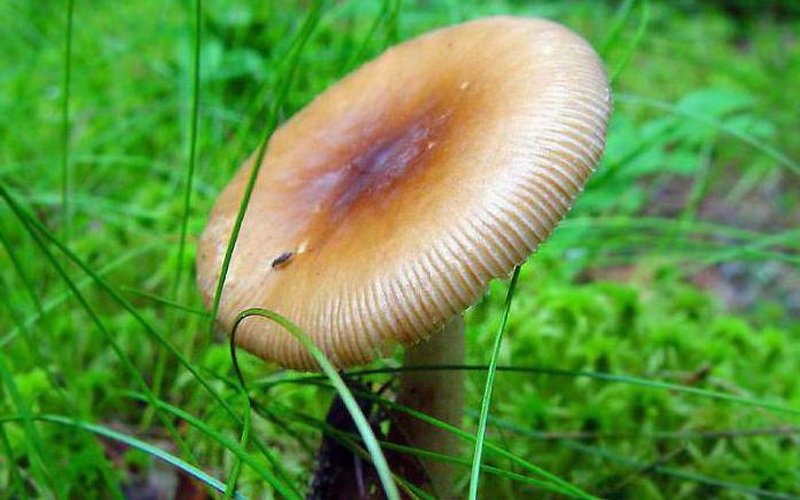
Umber yellow float in the photo
The mushroom float is umber yellow edible. The cap is 4-8 cm in diameter, thin and fragile, dry or slightly slimy, at first ovoid, then bell-shaped, then flat-convex or flat with a tubercle in the center, sometimes with white filmy scraps of bedspread, ribbed along the edge. The color of the cap is umber-yellow, yellow-olive or gray-brown, with a darker center. The plates are free white. The leg is the same color as the cap, but lighter, smooth with small scales, hollow, brittle, 6-12 cm long, 1-2 cm thick, immersed in the lower part of a free light gray volva. In principle, there is no ring on the leg. The pulp is fragile with a mushroom smell. Spore powder is white.
Fruiting from July to October.
It can be confused with poisonous fly agarics, but those always have a ring on the leg or traces of it.
Mushrooms float saffron

Mushrooms float saffron in the photo

Mushrooms float saffron in the photo
Saffron float mushrooms are edible, their cap is 4-8 cm in diameter, thin and fragile, dry or slightly slimy, at first ovoid, then bell-shaped, then flat-convex or flat with a tubercle in the center, sometimes with white filmy scraps of bedspread, ribbed along the edge ... The color of the cap is saffron-orange with a darker center. The plates are loose white or yellowish. The leg is white or light saffron, smooth or with scales, hollow, brittle, 6-12 cm long, 1-2 cm thick, immersed in the lower part of the free saffron inside and white outside the volva. In principle, there is no ring on the leg. The pulp is fragile with a mushroom smell. Spore powder is white.
Fruiting from July to October.
It can be confused with poisonous fly agarics, but those always have a ring on the leg or traces of it.
The saffron float is edible after preliminary boiling.
The use of pushers in cooking
There are mushroom pickers who gladly take pushers in the forest, but there are not many such people. You can often hear that these forest products are not appreciated because of their taste. Fragility also does not add positive reviews to the white float. Nevertheless, pushers are used in the preparation of some dishes after a short heat treatment. This plant is suitable for drying, it is salted and pickled.
It is not difficult to make a delicious soup at home. The pushers are preliminarily washed in water, removed forest debris and carefully cleaned of dirt. Then the product is laid out in a large saucepan, filled with water and boiled for 40 minutes. The finished semi-finished product is washed again and crushed into pieces.
Put potatoes cooked in the form of straws, finely chopped carrots and pieces of boiled mushrooms in a saucepan. The required amount of liquid is added to the container with the products and your favorite spices are added. The soup is cooked until the potatoes are fully cooked, the meal is served with sour cream and herbs.
Some housewives bake boiled pushers with potatoes and mushrooms. Mushroom culinary dishes have always been considered a special delight, but you should not forget that you cannot take a dubious product in the forest in order to avoid fatal poisoning.

